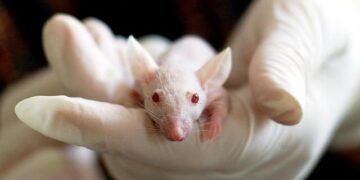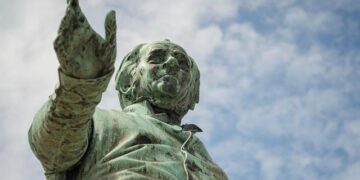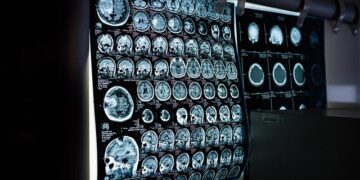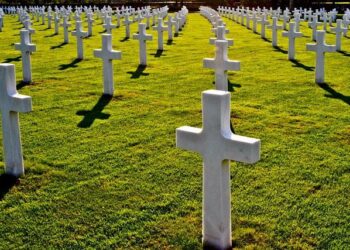The Department of Defense POW/MIA Accounting Agency (DPAA) has announced a significant development in its ongoing efforts to identify and honor American service members missing from World War II. Staff Sergeant Frank Dunning, long listed as missing in action, has now been officially accounted for, closing a decades-long chapter for his family and the nation. This important identification underscores the commitment of the DPAA to bring closure to the families of those lost in past conflicts and to preserve the legacy of American service and sacrifice.
Soldier Identified Decades After World War II Service Highlights Ongoing Recovery Efforts
The Defense POW/MIA Accounting Agency (DPAA) has successfully identified Staff Sergeant Frederick Dunning, whose remains were recovered from a World War II battlefield but remained unidentified for decades. The account of Sergeant Dunning marks a significant milestone in the agency’s ongoing mission to bring closure to families of missing service members from conflicts past. Using advanced forensic technology and collaborative efforts across military and scientific communities, this achievement underscores the relentless commitment to honoring those who made the ultimate sacrifice.
This identification sheds light on the broader scope of recovery efforts, highlighting key aspects such as:
- Forensic Innovations: Enhanced DNA analysis and anthropological studies improving identification accuracy.
- Collaborative Operations: Joint ventures involving U.S. and international agencies to locate and exhume remains.
- Historical Research: Detailed battlefield examinations combined with archival records aiding in narrowing down missing personnel.
| Case Detail | Information |
|---|---|
| Service Branch | U.S. Army |
| Year of Loss | 1944 |
| Recovery Location | Western Europe |
| Identification Method | DNA & Anthropological Analysis |
Detailed Examination of Forensic Methods Used to Confirm Dunning F’s Identity
Forensic experts employed a multifaceted approach to confirm the identity of Dunning F., relying heavily on both traditional and modern scientific techniques. Initial analysis included dental record comparisons, which proved essential due to the preservation of dental remains found at the recovery site. These records were meticulously matched against military dental charts maintained by the Department of Defense, providing a primary confirmation point. Additionally, anthropological examination focused on skeletal features such as bone structure, trauma patterns consistent with battlefield injuries, and estimated stature, all aligning with Dunning F.’s medical and service records.
Complementing physical analysis, advanced genetic testing played a critical role. Experts extracted DNA samples from recovered remains and performed mitochondrial DNA sequencing, which was then compared to living relatives. This process was supported by an array of corroborative evidence:
- Historical battlefield data: Correlating location and recovery timeline.
- Personal artifacts: Identification of dog tags and insignia found on-site.
- Medical records: Verification of documented injuries and surgical implants.
| Forensic Method | Purpose | Outcome | |||||||||||||||
|---|---|---|---|---|---|---|---|---|---|---|---|---|---|---|---|---|---|
| Dental Record Comparison | Confirm identity via unique dental features | Positive Match | |||||||||||||||
| DNA Analysis | Genetic link to relatives | Conclusive Confirmation |
| Forensic Method | Purpose | Outcome | |||||||||||||||
|---|---|---|---|---|---|---|---|---|---|---|---|---|---|---|---|---|---|
| Dental Record Comparison | Confirm identity via unique dental features | Positive Match | |||||||||||||||
| DNA Analysis | Genetic link to relatives | Conclusive Confirmation | |||||||||||||||
| Anthropological Examination | Assess skeletal features, trauma, stature | Consistent with Service Records | |||||||||||||||
| Artifact Identification | Validate personal effects like dog tags and insignia | Matched to Individual | |||||||||||||||
| Medical Records Review | Confirm injuries and surgical implants | Recommendations for Enhancing Military Remains Identification and Family Notifications
To improve the process of identifying military remains and ensuring timely family notifications, it is crucial to leverage advancements in forensic science and technology. Integrating DNA analysis with next-generation sequencing can increase accuracy and speed, especially when dealing with decades-old remains. Additionally, establishing a centralized, secure database accessible to allied nations can streamline data sharing and cross-referencing, reducing duplications and gaps in records.
Furthermore, creating a transparent notification protocol can help families cope during the identification process, ensuring dignity and respect are maintained. Coordination between government agencies and veteran organizations must be strengthened to provide counseling and logistical support when notifying next of kin. Below is a simplified overview of recommended improvements:
To Wrap It UpThe identification and repatriation of Private First Class Dunning serve as a poignant reminder of the enduring commitment to honor those who made the ultimate sacrifice during World War II. As efforts by the Defense POW/MIA Accounting Agency continue, families and the nation alike find solace in the recovery of lost service members. The solemn closure provided by these missions not only preserves history but also reaffirms the United States’ dedication to never leaving a fallen comrade behind. |































